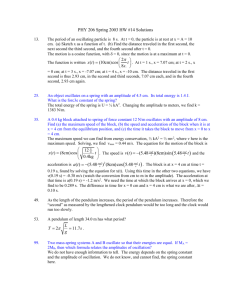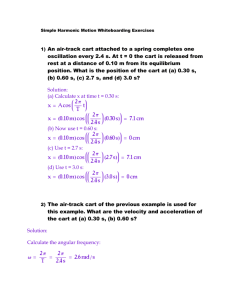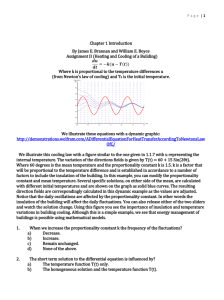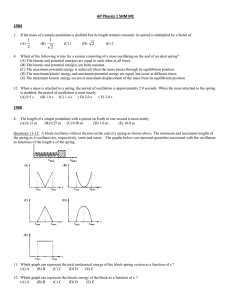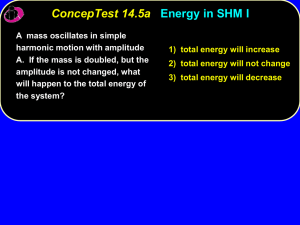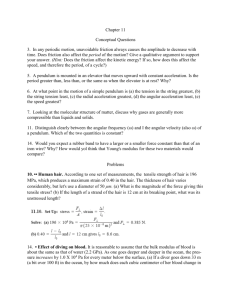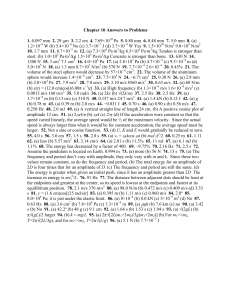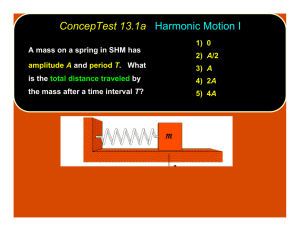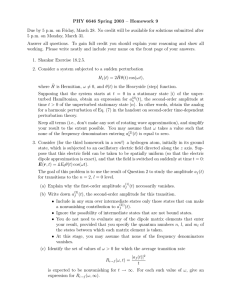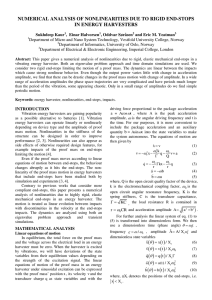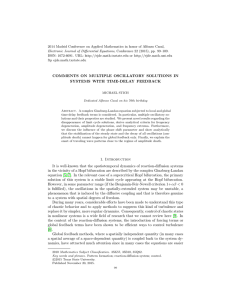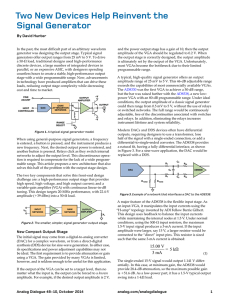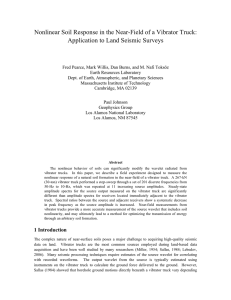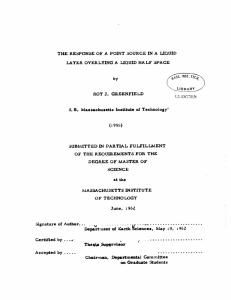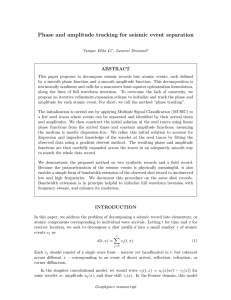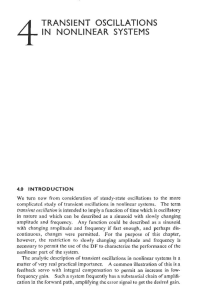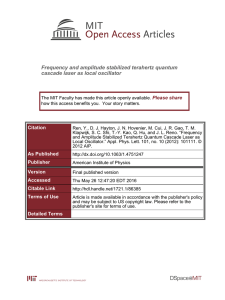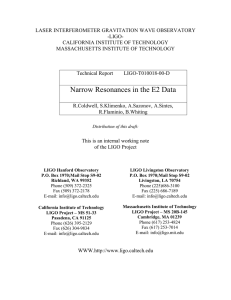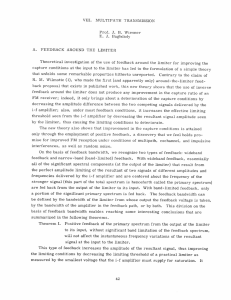Further problems relating to covered chapter 13 material.
advertisement
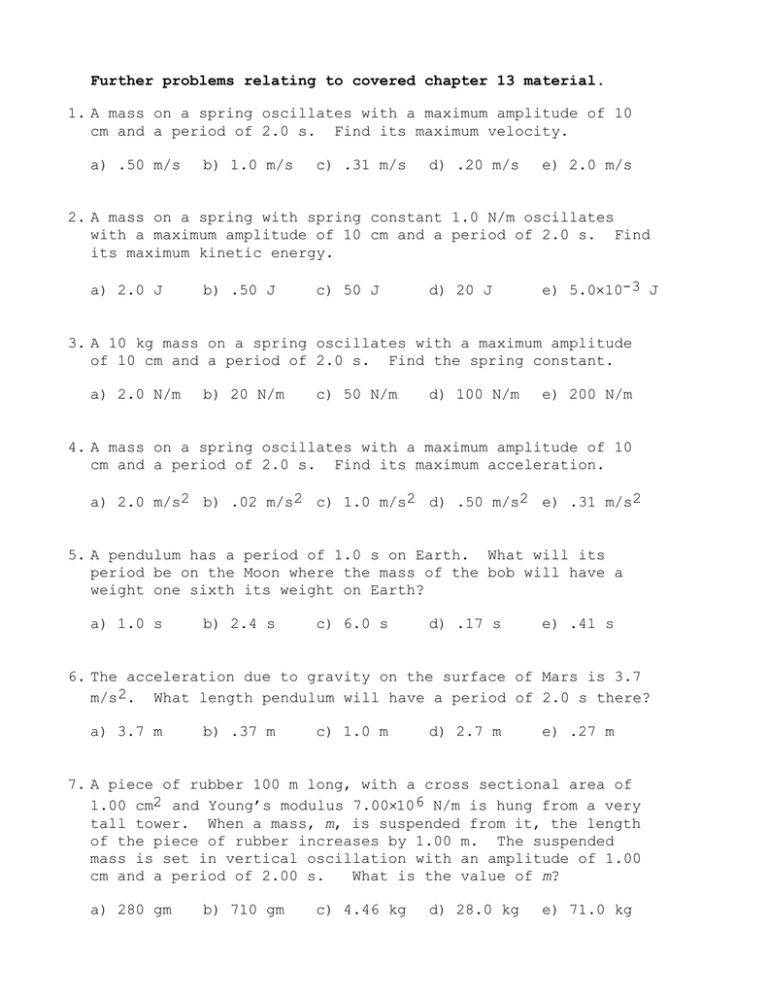
Further problems relating to covered chapter 13 material. 1. A mass on a spring oscillates with a maximum amplitude of 10 cm and a period of 2.0 s. Find its maximum velocity. a) .50 m/s b) 1.0 m/s c) .31 m/s d) .20 m/s e) 2.0 m/s 2. A mass on a spring with spring constant 1.0 N/m oscillates with a maximum amplitude of 10 cm and a period of 2.0 s. Find its maximum kinetic energy. a) 2.0 J b) .50 J c) 50 J d) 20 J e) 5.0×10-3 J 3. A 10 kg mass on a spring oscillates with a maximum amplitude of 10 cm and a period of 2.0 s. Find the spring constant. a) 2.0 N/m b) 20 N/m c) 50 N/m d) 100 N/m e) 200 N/m 4. A mass on a spring oscillates with a maximum amplitude of 10 cm and a period of 2.0 s. Find its maximum acceleration. a) 2.0 m/s2 b) .02 m/s2 c) 1.0 m/s2 d) .50 m/s2 e) .31 m/s2 5. A pendulum has a period of 1.0 s on Earth. What will its period be on the Moon where the mass of the bob will have a weight one sixth its weight on Earth? a) 1.0 s b) 2.4 s c) 6.0 s d) .17 s e) .41 s 6. The acceleration due to gravity on the surface of Mars is 3.7 m/s 2. What length pendulum will have a period of 2.0 s there? a) 3.7 m b) .37 m c) 1.0 m d) 2.7 m e) .27 m 7. A piece of rubber 100 m long, with a cross sectional area of 1.00 cm2 and Young’s modulus 7.00×10 6 N/m is hung from a very tall tower. When a mass, m, is suspended from it, the length of the piece of rubber increases by 1.00 m. The suspended mass is set in vertical oscillation with an amplitude of 1.00 cm and a period of 2.00 s. What is the value of m? a) 280 gm b) 710 gm c) 4.46 kg d) 28.0 kg e) 71.0 kg

